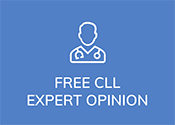Chronic lymphocytic leukemia (CLL) / small lymphocytic lymphoma (SLL) is an immune-compromising illness, and infection is one of the most significant risks for those afflicted with this condition. Vaccinations play a crucial role in the care of CLL / SLL patients to reduce the risk of contracting and suffering certain infectious diseases. The goal of this article is to help provide guidance because knowing which vaccinations to get can be confusing. This article will lay out the current United States national recommendations to help you make the proper choices.
The guidelines to be presented below have been developed by the United States Advisory Committee on Immunization Practices (ACIP), a group of medical and public health experts from multiple medical specialties and public health agencies under the oversight of the United States Department of Health and Human Services. The ACIP extensively reviews the most current data. After intensive study and documentation, initial recommendations are drafted and then presented to the Centers for Disease Control (CDC) for review and final approval before being placed into national guidelines.
The complete CDC adult vaccination guidelines can be found here: https://www.cdc.gov/vaccines/schedules/downloads/adult/adult-combined-schedule.pdf
Pay special attention to Table 2, which deals with immunizations for the immunocompromised.
Guidelines may vary for those of you in other countries, and it may be best to check your national recommendations. The links to these sites can be found below.
For those of you in Britain: https://www.nhs.uk/conditions/vaccinations/
For those of you in Australia: https://www.health.gov.au/health-topics/immunisation/when-to-get-vaccinated/national-immunisation-program-schedule
Before delving into the individual vaccines, it is important to understand that vaccines are developed using different methodologies and can be divided into two classes: inactivated and live vaccines. An important point to remember is that we should only receive inactivated vaccines and never a live vaccine produced with an attenuated (weakened) but living form of a virus. This is because, due to our weakened immune systems, the injected virus may potentially reactivate and cause actual infection and illness. Examples of live vaccines to be avoided include:
- Intranasal Flu vaccine (FluMist)
- Measles, Mumps, Rubella (MMR)
- Varicella
- Zostavax (no longer used in the USA as of November 18, 2020)
- Yellow Fever
- Oral polio (not used in the US since 2000)
Moving onto the inactivated vaccines, of which there are many available, it is important to note that they can be divided into those considered routine and those that are specialized. The specialized vaccines are beyond the scope of this article and are those needed, for example, when traveling to a foreign country where diseases not commonly found in the US may be encountered. Knowing that some travel-related vaccines are live and may be contraindicated is essential. The destination, duration of the trip, and other factors are used to determine which vaccines are indicated, and that information can be found through the CDC here: https://wwwnc.cdc.gov/travel
Below are the routine vaccines we should receive. Some of these vaccines require repeat dosing, and others do not. Indications and dosing schedules are outlined for you.
COVID-19 Vaccine
- Much has been written about the novel coronavirus, SARS-CoV-2, which has turned our world upside down since 2020. The illness is far-reaching with severe effects. Vaccination, amongst other prevention strategies, is of key importance, and extensive information about the virus can be found at https://cllsociety.org/covid-19/
Influenza Vaccine
- Influenza is a viral respiratory infection with a higher seasonal prevalence during winter and may infect the nose, throat, and lungs. In severe cases, it may cause pneumonia and even death, so vaccinating is very important. In addition, because the virus may mutate and change from year to year and immune protection from a vaccine wanes over time, it is essential to get your vaccine annually.
- Get your vaccine soon upon its release, usually in early September.
- Avoid the live attenuated nasal vaccine, FluMist.
- There are many commercially available inactivated flu vaccines, all of which cover four strains of the virus, and the CDC does not recommend a particular formulation.
- However, one vaccine, Fluzone High Dose, contains a greater amount of antigen than the other inactivated vaccines and may promote a more robust immune response. It is approved by the Food and Drug Agency (FDA) for persons over age 65 and may be a consideration.
- Because our immune systems are weak, we may not get a complete response to the vaccine, so it is important for our close contacts, who will likely have a more robust response, to be vaccinated to reduce the risk of passing the flu onto us.
Pneumococcal Vaccines
- Pneumococcus is a bacterial infection that can cause severe illness in the form of pneumonia, blood infection, and meningitis. Persons at increased risk include the elderly and those of us with blood cancer. Over 90 serotypes of pneumococcal bacteria and vaccines have been developed to target the types most at risk of causing severe disease.
- The recommendations for vaccination against pneumococcal disease were unchanged for many years. Still, with the release of new vaccines, significant changes have been made, with the most recent updates having been released by the CDC in January 2022. One goal of the latest recommendations has been to simplify the vaccination regimen. On the contrary, there seems to be some significant complexity which I will try to simplify in straightforward terms so you will know what vaccines you should get and when to get them.
- The best time to get vaccinated is early following your diagnosis of CLL / SLL, so do not delay.
- The three currently available vaccines: are Vaxneuvance (PCV15), Prevnar20 (PCV20), and Pneumovax 23 (PPSV23).
- The first two vaccines, PCV15, and PCV20, are conjugate vaccines (PCV) and have replaced the earlier versions: Prevnar 13 (PCV13 ) and Prevnar (PCV7).
- CDC guidelines for pneumococcal vaccinations of immunocompromised persons can be found here Pneumococcal Vaccine Timing For Adults and are summarized below.
- CLL / SLL patients who have not previously received a PCV or whose previous vaccination history is unknown should receive one dose of either PCV20 or PCV15. When PCV15 is used, it should be followed by a dose of PPSV23. The recommended interval between administration of PCV15 and PPSV23 is ≥ one year, but a minimum interval of eight weeks can be considered for adults with an immunocompromising condition which includes CLL / SLL. The pneumococcal vaccination series is considered complete following the single dose of PCV20 or the PCV15/PPSV23 combination, and at this time, additional follow-up vaccines are not being recommended by the CDC.
- CLL / SLL patients who previously received a dose of PCV13 should have a PPSV23 at least eight weeks later. If you were younger than 65 when the first dose of PPSV23 was given and have not turned 65 years old yet, you should receive a second dose of PPSV23 at least 5 years after the first dose of PPSV23. This is the last dose of PPSV23 that you should be given before 65 years of age. Once you turn 65 and at least 5 years have passed since PPSV23 was last given, you should receive a final dose of PPSV23 to complete all pneumococcal vaccinations. At this time, additional pneumococcal vaccines are not being recommended by the CDC.
- CLL / SLL patients who previously received a dose of PCV13 and have not completed the vaccination series with PPSV23 may, in the case where PPSV23 is not available, instead receive a single dose of PCV20. The vaccination series is considered complete at this point. Therefore, additional follow-up vaccines are not recommended by the CDC.
- CLL / SLL patients who previously received PPSV23 without a PCV 13 may proceed with either a single dose of PCV20 or a single dose of PCV15 ≥ one year after the last PPSV23 dose. The pneumococcal vaccination series is then considered complete. At this time, additional follow-up vaccines are not recommended by the CDC.
Polio Vaccine
- The scourge of polio has resurfaced in some communities in the United States, most likely due to low vaccination rates. The only polio vaccine available in the USA since 2000 is the inactivated injected vaccine or IPV. However, many other countries still use a recently updated live attenuated (weakened) oral polio vaccine. So, again, CLL / SLL patients should avoid any live vaccines. If you were not vaccinated as a child, which would be most unusual, now might be a good time to discuss the primary inactivated series with your healthcare team. If you were vaccinated but live in a high-risk area, it may be appropriate to discuss with your doctor whether a booster with IPV makes sense.
Shingles Vaccine
- Shingles is a painful viral infection due to the reactivation of the chicken pox virus (Varicella), resulting in a blistering rash. One in three persons will develop shingles in their lifetime. The risk for shingles increases with advancing age and with weakened immune systems. A significant complication of shingles is postherpetic neuralgia which results in persistent pain following the resolution of the rash and may occur in 10-18% of those who get shingles.
- There are two vaccines available, one of which, called Zostavax, is a live vaccine and should be avoided. Zostavax is no longer used in the USA but is available in some countries
- Shingrix, the inactivated vaccine, is the preferred vaccine and has been shown to reduce the risk of the painful blistering rash known as zoster and any persistent painful symptoms of postherpetic neuralgia. However, the question arises whether patients with CLL / SLL will respond to the vaccine, as prior studies have shown a decreased response to the Influenza vaccine. Fortunately, two studies have shown an immune response to the Shingrix vaccine in both treatment naïve patients and those on Bruton tyrosine kinase inhibitors such as Ibrutinib. Therefore, one should not delay getting this vaccine if on treatment.
Tetanus Vaccine
- Tetanus is a bacterial infection that causes muscle spasms known as “lock jaw.” The bacteria reside in the soil and may enter the body through an open wound. Diphtheriae is also a bacterial infection that usually spreads via respiratory droplets and causes an illness that generally affects the throat resulting in difficulty breathing but may also affect the skin. Pertussis, also known as whooping cough” is also transmitted by respiratory droplets and results in violent coughing that can be so severe as to result in fractured ribs. Tetanus and diphtheriae are rarely reported in the United States though pertussis remains a more common infection. Tetanus, diphtheriae, and pertussis vaccination begins in childhood and requires repeat periodic vaccinations through adulthood.
- Tetanus vaccines are available in two forms:
- Tetanus, diphtheriae (Td), which protects against tetanus and diphtheriae.
- Tetanus, diphtheriae, and pertussis (Tdap) protect against all three bacteria.
- A Td or Tdap routinely should be given every ten years. Previously, the CDC recommended a single Tdap in adulthood followed by periodic Td boosters. However, the CDC no longer recommends one vaccine over the other. However, a Tdap may be the better choice for a booster, especially if there will be close contact with an infant less than twelve months of age, to prevent the risk of passing pertussis onto a child.
- A booster Td or Tdap may be indicated if five years have passed from the prior vaccine if there is a significant laceration. Again, either vaccine is acceptable though a Tdap may be the better option.
Hepatitis B Vaccine
- Hepatitis B is a virus transmitted through exposure to blood and certain body fluids. It can cause severe acute liver inflammation and, in some cases, persist, causing chronic liver disease and eventually death. Vaccinations for hepatitis B are now routinely given starting at birth, but for those who did not get vaccinated, it is recommended that the vaccination series be given in adulthood.
- There are several hepatitis B vaccines available, all of which are equally recommended.
- In addition, there is a combination vaccine, Twinrix, containing both hepatitis A and hepatitis B vaccines combined. This may be a very good choice as it would help protect against both viruses.
- In some cases, when there is an immunocompromised patient following a hematopoietic stem cell transplant (HSCT), serologic testing following the vaccine may be indicated for an immune response.
- More complete information can be found here: https://www.cdc.gov/mmwr/PDF/rr/rr5516.pdf
- In addition to the above routine vaccines recommended for all of us, a few selected vaccines are recommended when an additional underlying risk factor is present.
Hepatitis A vaccine – this vaccine is indicated when an additional risk factor is present, though optionally, may also be given if desired.
- Hepatitis A is a viral liver infection usually transmitted through contaminated food and water. Hepatitis A is an uncommon infection in the United States and is more commonly found in less developed nations though sporadic outbreaks occur here. This vaccine is recommended for individuals with any of the following underlying risk factors: chronic liver disease, HIV, men who have sex with men, homelessness, travel to an area with high or intermediate endemic rates, injection or non-injection drug use, close personal contact with an international adoptee, work settings where exposure is more likely.
- The CDC database of travel destinations of high or intermediate endemic Hepatitis A rates can be found here: https://wwwnc.cdc.gov/travel/destinations/list
- The Hepatitis A vaccine is available as a stand-alone vaccine or in a combination form with the Hepatitis B vaccine. Speak to your physician about getting vaccinated if you have one of the above risk factors or will be traveling to a destination that puts you at risk of exposure to Hepatitis A or if you prefer to cover all bases and have this vaccine.
Haemophilus Influenzae Type B Vaccine
- Haemophilus influenzae type B is a bacterial infection that can cause serious lung, brain, and bloodstream infections, not to be confused with influenza, a viral infection known as the flu. Vaccination to prevent this disease is usually given to children within the first year of life. In addition, the vaccine is recommended for certain adults, specifically those with HSCT or those with an anatomically or functionally absent spleen. It would be best if you spoke to your physician about vaccinations should you plan to undergo this procedure.
- For those with an anatomically or functionally absent spleen, one dose is recommended and should be given at least 14 days before spleen removal.
- For those undergoing HSCT, a 3-dose series 4 weeks apart starting 6-12 months after a successful transplant should be given even if previously vaccinated.
- Discuss with your healthcare team about Haemophilus Influenzae Type B vaccine
Meningococcal Vaccines
- Meningitis is a serious life-threatening illness causing inflammation of the layers surrounding the brain and spinal cord and bloodstream infection. There are many causes, some non-infectious and others infectious, including bacterial, viral, fungal, and parasitic agents. Vaccines have been developed to prevent a subset of bacterial meningitis. These vaccines are recommended for certain individuals, including adults who no longer have an anatomic or functioning spleen.
- There are two commercially available meningitis vaccines:
- Meningococcal conjugate (MenACWY) vaccines
- Serogroup B meningococcal (MenB) vaccines
- Speak to your physician about the dosing and booster vaccination recommendations.
In summary, we need many vaccines, which should be given early in our treatment. It is true, unfortunately, that we may not produce as strong an immune response to these vaccines as compared to those with normal immune systems. Even so, we should not delay getting vaccines to protect ourselves as best we can. Because of our unique situations, our treating physicians may choose to modify current vaccine recommendations, and it is best to follow your specialist’s advice. And it is crucial to be aware that guidelines will likely change due to the rapid pace at which medical science is progressing. We will do our best to keep you updated.
I hope this has helped guide you through yet another path along your CLL / SLL experience.
We share in this journey together.
Kim Davidson, MD
Kim Davidson received her Doctor of Medicine degree from the Medical College of Virginia. Following training in Obstetrics, Gynecology, and Family Medicine, she provided medical care and taught for over thirty years until retiring. She is also a CLL patient and shares this journey with all of you.

















